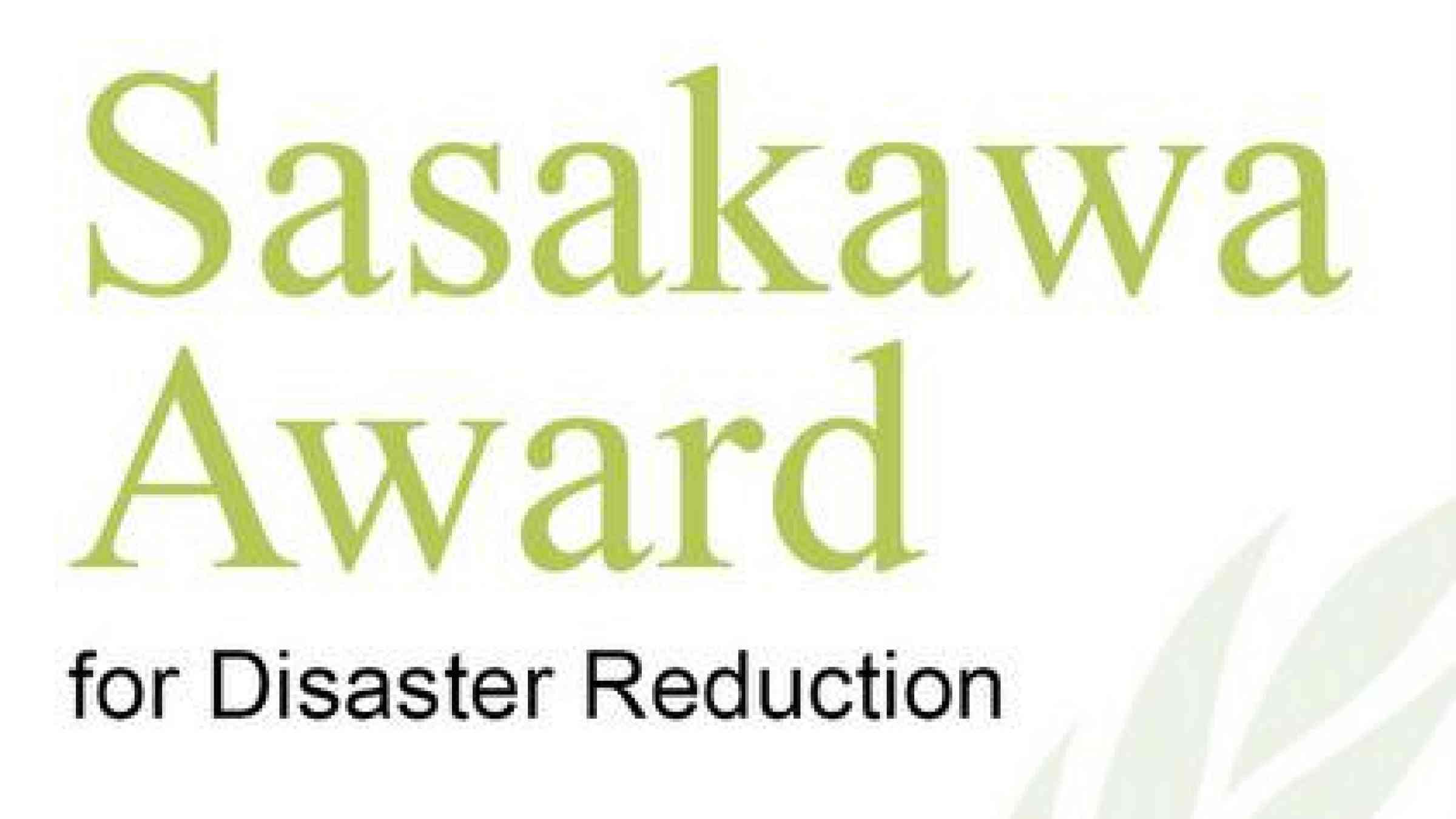Finalists for the 2011 Sasakawa Award for Disaster Risk Reduction showcase durable solutions in resilient urban planning

Geneva – Four cities and two organizations have been shortlisted for the Sasakawa Award for Disaster Risk Reduction, worth $50,000, with winners to be announced 10 days from now at the Global Platform for Disaster Risk Reduction, on 12 May.
The Award is given to an individual or organization for outstanding and internationally recognized action that contributes to building the resilience of nations and communities to disasters. It is designed to stimulate wider application of the Hyogo Framework for Action, the key instrument for implementing disaster risk reduction, adopted by the Member States of the United Nations in 2005.
The finalists include the cities of Bhubaneswar, India; North Vancouver, Canada; Santa Fe, Argentina, and San Francisco, Philippines. Two organizations making the final cut are the Coordinator Centre for Natural Disaster Prevention in Central America (CEPREDENAC), headquartered in Guatemala, and the Earthquake Reconstruction and Rehabilitation Authority, a joint initiative of the Pakistan Government and the United Nations Human Settlements Programme.
A jury of four disaster risk reduction experts, from Jamaica, the Philippines, South Africa and Turkey, says a cash prize will be awarded to each of the top three applicants, whose identity will be revealed at an award ceremony on 12 May.
“Being prepared is both a political and personal choice, exemplified by the top candidates who kept going despite resource constraints or changes in the political landscape,” said Margareta Wahlström, Special Representative of the United Nations Secretary-General for Disaster Risk Reduction. “The jury reported being highly impressed by the calibre of applicants this year. In the end, the deciding factor was institutional durability and an ability to convince everyday people to care about risk and to reduce its impact on their lives.”
Ms. Wahlström heads the Geneva-based United Nations secretariat for the International Strategy for Disaster Reduction (UNISDR), which manages the award. UNISDR received 25 letters of nomination this year – twice as many as last time – comprising 14 cities, 4 individuals and 7 institutions (see attached for details).
She attributed the predominance of cities in the competition this year to the surge of interest among local governments in disaster risk reduction as a result of UNISDR’s “Making Cities Resilient – My City Is Getting Ready!” campaign launched in the summer of 2010. To date, 635 cities are participating in the Making Cities Resilient campaign, each submitting questionnaires of self-assessment which are posted online for public scrutiny (http://www.unisdr.org/campaign).
Many of the nominees for the Sasakawa Award this year are working to boost resilience through community-based projects, which fits with the theme of the 2011 Global Platform for Disaster Risk Reduction, “Invest Today for a Safer Tomorrow: Increase Investment in Local Action.” The conference runs from 8 to 13 May, with 2,000 participants – including many city mayors – expected to attend.
Notes
The top six candidates for the Sasakawa Award will have an opportunity to present their case at the “Ignite” stage of the Global Platform conference, and to answer questions from the audience.
1. Tuesday, 10 May, 13:15-14:00: San Francisco and North Vancouver
2. Wednesday, 11 May, 14:00-14:45: CEPREDENAC and ERRA
3. Thursday, 12 May, 13:15-14:00: Bhubaneswar and Santa Fe